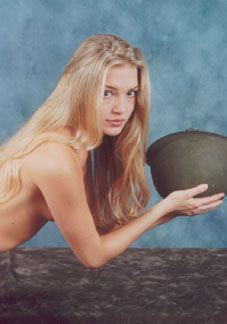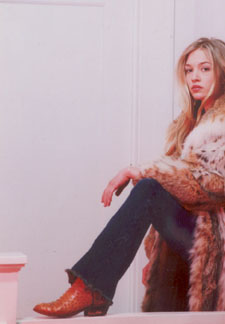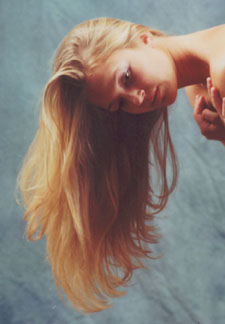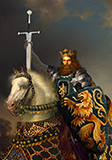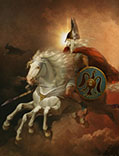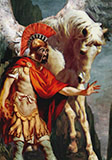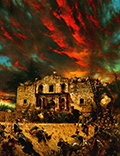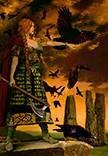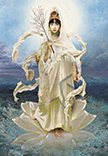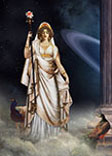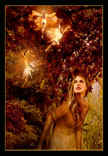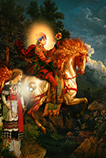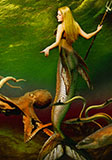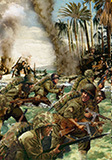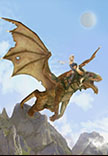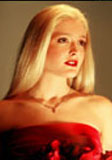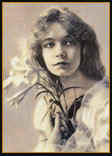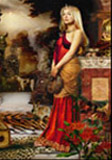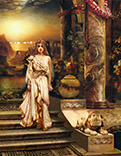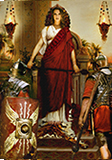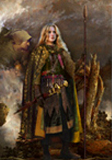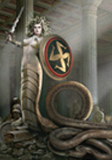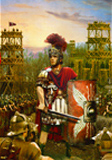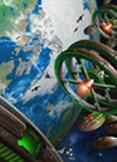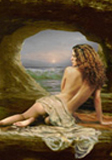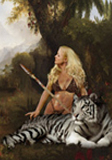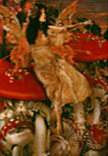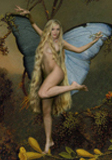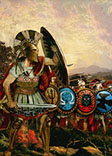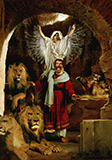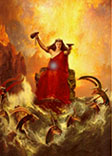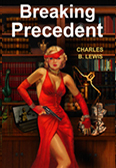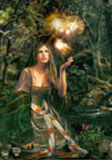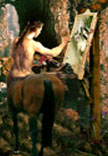|
21st
Century Art &Technology; Digital Art & Western Art Tradition & Etiquette

  

The Digital Art of Howard David Johnson
; METHODS : Anatomy of an Illustration; Experiments in the use of
Digital Art Technology combined with traditional old fashioned art
media to create new realistic art. MORALITY: essays on 21st
century copyright law, the public domain, and western art traditions
and etiquette by the artist. H D Johnson has spent a lifetime creating
Traditional Art in a wide variety of old fashioned Realistic Art media
and now has embraced The Technology of the Digital Art Movement as
well.
|
|

Old-Fashioned Art with Twenty-
first Century Technology...? Yes!
 


 
|
|
Art
& Technology; The Evolution of Mechanical Aids
"Since the times of the ancient Greeks, Art History
records a relentless quest for Realism and artistic excellence in
realistic paintings and sculpture. The masters of each generation
strove to perfect their craft, then passed on the torch of their
accumulated knowledge and skill to the next generation. The
accomplishments and technological breakthroughs of one generation have
often set new standards of excellence for the next." ~ H.D.J.
 
  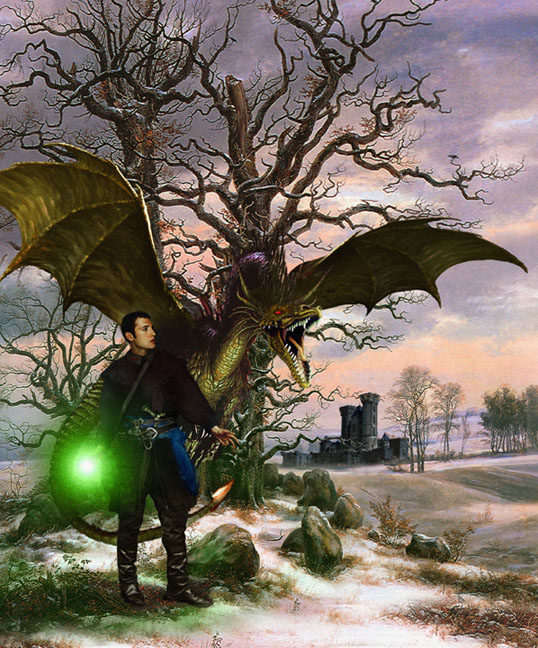
"Lilly
Evans" MMXI Mixed Media including Oil on Canvas, 3D studio Max and
Adobe Photoshop (Above) "Lilly" is the first illustration David has
created that incorporates images created in 3D Studio Software. The
possibilities that these computer programs combined with traditional
media and techniques present to the art world staggers the
imagination...

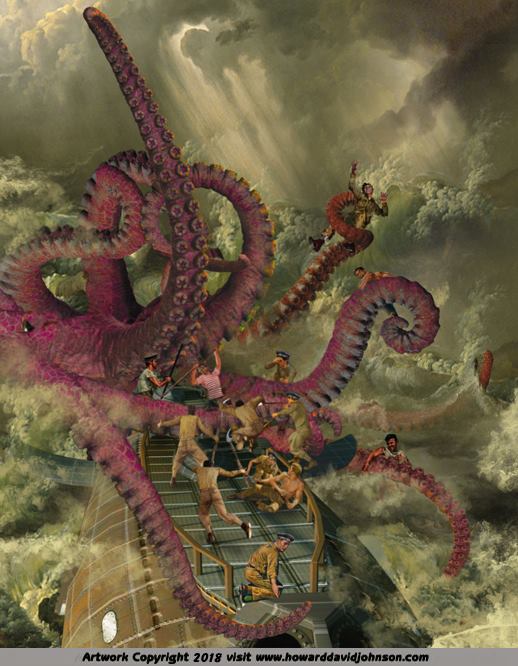

|
Above: Examples of book
illustrations: "THE TIME MACHINE" by H. G. Wells (left) "20,000 Leagues
under the SEA" and "Master of the World" by Jules Verne [All (c) 2014
in Mixed Media including 3D]
|
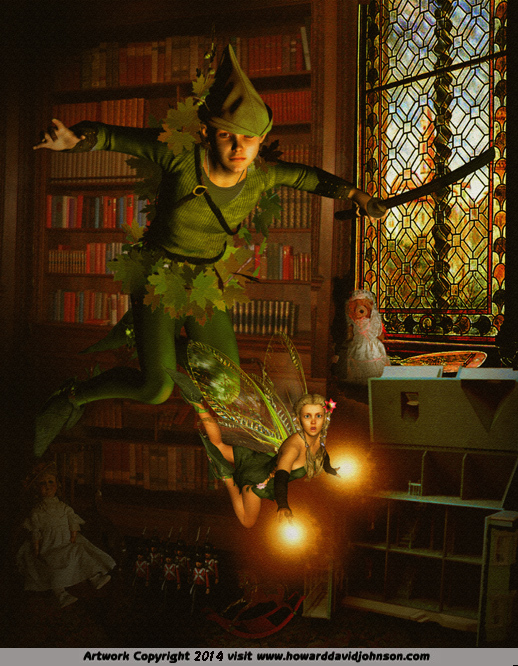
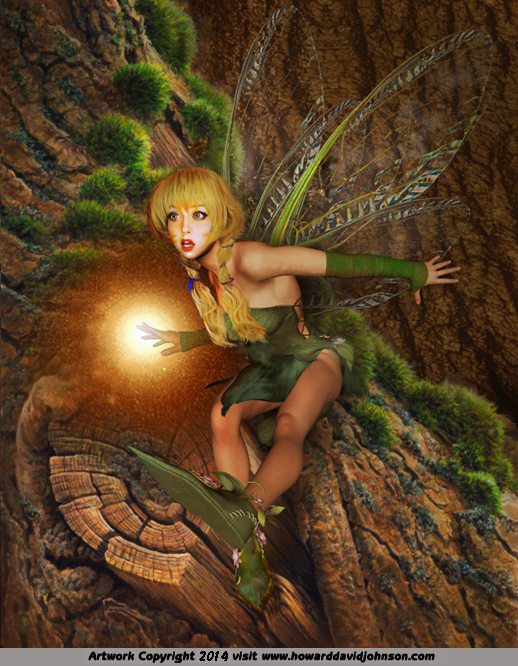
New!
"Peter Pan" and "Horror of Tinkerbell" MMXIV~ Mixed Media including 3D
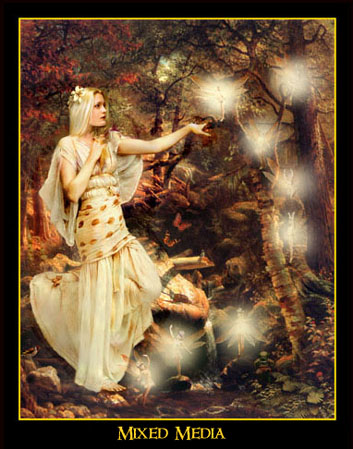
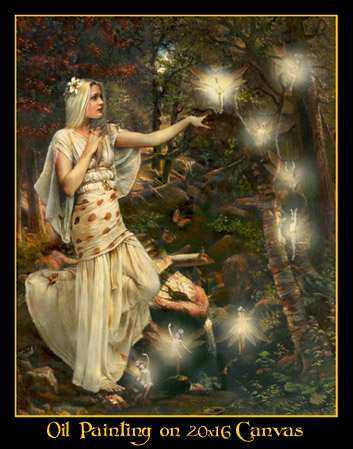
Almost
all of Johnson's Digital Mixed Media creations (above left) are
available to be rendered in oil on canvas like the 20x16 oil on canvas
Faerie Guardians (above right). Each design will only be rendered in
oil once at this size and can be delivered in as little as 90 days.
Sadly, much of the subtlety, vibrance,
lustre and impact of an original oil painting is lost when it is
scanned and imported to digital media or even printed by a master
printer. Nothing can compare to an original oil painting viewed in
person in my opinion but the other painting media definitely look good
in print and have their charms and distinct advantages. People have
written asking me to tell them how to tell mixed media from
prismacolors or oil. The very fact it is so hard to tell is my point!
This new media looks very presentable and costs far less!
ALL HALLOWS EVE was begun as a
digital montage...refined in colored pencil and finished in oil on
canvas
  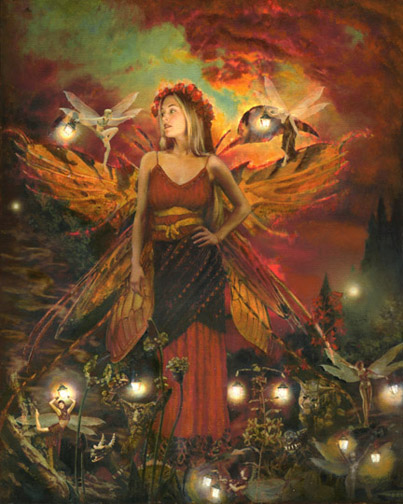
Very few
customers using print media these days are willing to wait for oils or
pay for all the time...
|
|

|
Did you know
the old masters often traced and employed every mechanical aid at their
disposal? Leonardo Da Vinci used "Camera Obscura" which is a
lens and a mirror set at an angle with parchment over it to trace onto.
Michaelangelo used a similar technique. The use of Photography as a
mechanical aid to oil paintings and other forms of realistic art came
right away. This is not surprising since artists had been tracing from
Camera Obscura for thousands of years.
Famous Myths; Leonardo Da Vinci (1452- 1519 ) is often credited with
the invention of Camera Obscura because he used it for his masterworks
during the Renaissance and mentioned it in his notebooks, but this is
simply not true. Similarly, Americans are credited with the camera, but
it is also not true. Unlike the camera, the inventor and time of
invention of Camera Obscura are unknown. Perhaps a crude form of it was
known to the ancient Greeks, but there is no evidence for this. The
mathematical precision and perfect anatomy of Greek art combined with
their passionate love of science and mathematics is enough for many
scholars.The earliest description of Camera Obscura occurs in the great
optical treatise of the Islamic scientist Al-Hazen who died at Cairo,
Egypt in A.D. 1098.
|
|
His Opticae Thesaurus ( Book of
optics ) was rendered into Latin sometime during the 12th or 13th
century by an unknown translator. Al- Hazen honestly declares that he
himself did not discover it, so we know it had to come before A.D. 1098.
|
|
For more
on this, read "On Art and
Technology: When Seeing is Not Believing" below. In the early
days of photography artists used various transfer methods like
enlargement grids and the like.
Later artists like Maxfield
Parrish would cut out and assemble photographic collages to trace on
boards or canvas and then paint. Even later projection equipment lent
more speed and control, but mechanical aids could also create a
dependence, stifling artist's creativity and imposing limits. This has
always been one the greatest pitfalls of working from photographs. For
decades I made differently sized xeroxes and tracings and and cut them
out and slid them around replacing them with larger and smaller copies
to get the perspectives perfect and the design of the composition to
have the mathematical precision I wanted.
What a mess! Bits of paper trash and glue everywhere!
Irritating trips to a copy store that did not want to wait on customers
who wanted less than a hundred copies.
|

Pixie Dust - Mixed
Media;
Finding and training the right models, Photography, Mathematical Design
and Digital Composition all come before the image is chosen to be
transferred to paper or canvas and rendered in prismacolor
pencils, oils, or other traditional art media...
|
|
Then came computers..! No more
mess..! much lower expenses! The old collages were a mess and were
almost always destroyed because of their raggedness, but these new
Digital Photo Montages are Surprisingly presentable compared to their
forerunners in earlier technologies.

 
|
|
First comes research and again, finding and training the right models
is the hard part, then Photography, Mathematical Design and Digital
Composition all come before the image is transferred to paper or canvas
and then rendered in mixed media ( including prismacolor pencils,
oils, acrylics, and or many other traditional art media). Pandora's box
: First a sketch, then a photo, then a collage, then a volume drawing,
Then finally rendered as an oil painting. (above) Painting dozens of
layers of Transparent glazes of Oil on Canvas. Only David's
finest digital works ever go on to be rendered in acrylic or oil paint
on canvas or panel. |
| The old masters had
several apprentices to grind their pigment to make oil paints, then
came oils in a tube and the impressionists and the Plein air tradition
followed. These wonderful developments will have no less impact! I stay away from large oil
paintings for the most part because they take so long and no one can
afford them these days. Working at 11 x 14 is my favorite size because
it takes care of most printing applications and can be completed almost
twice as fast as a16 X 20 oil painting. One of the principle complaints
about digital media is that it produces no original. The old Masters
used every mechanical aid at their disposal to transfer their
preliminary images to canvas, grids, camera obscura, tracings and so
on. By blending digital and traditional media I get rid of this
problem. I can move much faster and with a great deal more control. For
more on these preliminary stages see below or visit the "about the
artist" or "digital" pages in the gallery links. This web
page delves into the methods and morality of this incredible new merger
of art and technology with essays, step by step demonstrations and
numerous illustrations and examples... Read "Copyright Law and the
Visual Arts in the Digital Age" at the very bottom of this page... |

Mixed Media: Photography, Drawing,
Painting combined with Digital Artistry
|
| Where would Walt Disney
be without the Brothers Grimm, Hans Christian Anderson, Victor Hugo and
so many others? Where would Aaron Copeland have been without American
folk music? Thomas Nast's Santa Claus without traditional images of
Father Christmas? Picasso without African art? These are
artists who made names and fortunes through Public Domain
appropriation, one and all. Beethoven did "variations on a theme"
with the works of Mozart for the same reasons I have done mine with
Waterhouse and others- to learn and give homage to the artists who most
inspired me. Art tradition and etiquette suggest the
artists who have been most influential should be mentioned at exhibits;
these original new pieces shown in this exhibit take their inspiration
in part from the paintings of Waterhouse, Alma-Tadema, Church, Godward,
Moreau, Bouguereau, Leighton, Ingres, Moore, Parrish, Rackham and
others. Most of my sources are changed so much they are impossible to
detect, but sometimes I make it obvious to pay homage. |
|
|
FOR A BREAKDOWN
OF THE ANATOMY OF A MIXED MEDIA DIGITAL ILLUSTRATION
KEEP SCROLLING DOWN...
|
2010 Artist’s Statement:
“The
Attack of the Luddites”
| There is a school of
thought that seems to think that a caveman’s beating on a hollow log
with a stick is automatically superior to Beethoven’s Ninth Symphony
performed by the world’s finest symphony orchestra because less
technology is involved. I do not subscribe to this kind of thinking.
While I enjoy primitive art and music a great deal, I prefer a symphony
orchestra or electronic music. I also prefer my doctors to use the
latest technology in my health care and would not consider it an
advantage to apply leeches or bleed me instead, but oddly enough the
art world has a camp in the 21st century that will go to war
over this Luddite* mentality using the internet. I
find this amusing. If using technology is bad to create art,
why are they writing on the internet? Isn't writing a form of art? If
the computer generates the art does the computer write their term
papers or is it a tool? If you have not encountered them, they insist
an artist who uses digital media now cannot possibly have ever learned
traditional methods and left them behind and must be a fraud. In the last few years, although I have rarely used colored
pencil for professional illustration assignments, I still love it and
use it for personal portraits and to relax, but digital media has taken
over the world of commercial art and films.
[* The word “Luddite” comes from a name taken by a
criminal band of weavers who destroyed machinery between 1811-16
in Midlands and northern England out of fear it would cut them off from
their source of employment. Sources say they are named after a
Leicestershire worker Ned Ludd, who had
done the same thing in 1779. Since at least 1961 this title has been
applied to modern enemies of technology.]
|

"Elven Fairy
Magic" MMVII Prismacolor Pencils
|
 


 
|
Howard
David Johnson
works in a wide variety of media * Oil paintings * Acrylic Paintings *
Prismacolor Paintings * Drawings * Chalk & Oil Pastel Paintings *
Photography * and last but not least: Digital Artistry & Mixed
Media * Because of the use of photography and digital
media in everything he does, even Johnson's all-oil paintings can be
termed mixed media.*
info@howarddavidjohnson.com
Your business, letters,
& links are always welcome.
*****
|
|

Howard David Johnson - American
Illustrator.
|
"Did you know that many of the breathtaking works Pre-Raphaelites were
doing in oils in the 1800’s were declared not to be Art? In London the
Royal Academy had a very narrow view as to what qualified. No wonder
Rossetti led a rebellion against them. How about Styles? Impressionism
is a great example; It was not enough that these institutions rejected
the work, but they felt the need to destroy the person’s reputation and
livelihood. Of course collectors pay millions for these Impressionistic
paintings now, and Curators, Historians and Professional Art Critics
all hail them as sensitive works of fine art.
When Monet
submitted his work to the Salon in Paris, they said" A monkey has
gotten a hold of a set of paints" and would paint huge "R"s for
"rejected on the back canvas. Rejecting him was not enough for them.
They wanted to be sure he never sold another picture. They wanted to
hurt him and his family for sick sadistic pleasure. He got really good
at re-stretching his canvas with a double layer to cover up their
hateful defacement of his original art. They saw themselves as powerful
as the deadly committee for public safety in the French Revolution as
far as the Art World went and delighted in "sending artists to the
guillotine", so to speak.
|
| These hateful little petty tyrants were unable to keep his
name out of the history books or to keep his paintings for selling for
millions of dollars. This is the treatment someone who creates a new
style gets, but developments in applied technology like manufactured
tube paints as opposed to hand mixed paints were violently rejected by
these types as well and they forcefully proclaimed anyone who used
paints from a tube was not a "real artist". Actually, masters had
several apprentices that would mix their paints for them. Well, tube
paints are pretty well accepted now. So will photography and digital
media in time. Today artists have computers instead of indentured
servants. You probably
know how bad Photographers were treated, but
now it is a respected Art Form. I read about the hateful things they
said about Pastels and Mary Cassat, and now Pastel Paintings are
considered Fine Art and Mary Cassat’s works are regarded as
masterpieces. Now that snobs have Digital Artists to look down on,
Colored Pencils are actually starting to get some respect. Digital
artists- Our day too will come." |
Faerie
Wood MMII - Here is a Digital Composition
commissioned by Adobe Photoshop Auto FX...
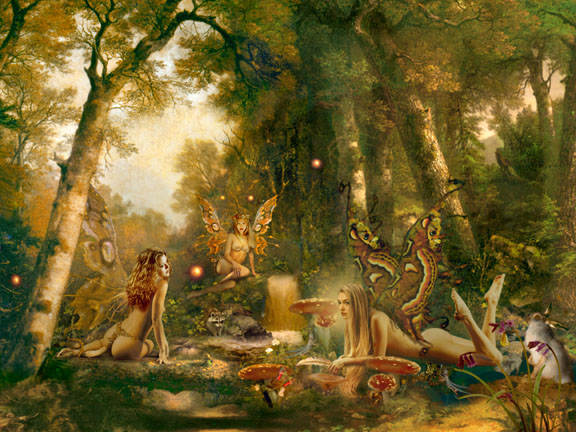
Announcing Art Numérica -an exciting
merger of traditional visual art and cutting edge technology... a new
art form for the twenty- first century... Art Numérica is not limited
to realistic art but also offers limitless horizons for everything from
cartoons to abstractions. It is the most dramatic development in the
visual arts since the Renaissance. In the words of Al Jolson in the
movie world's first talking picture" You ain't seen nothin' yet!"
|
|
From the World's foremost developer of artistic imaging
software for Adobe Photoshop
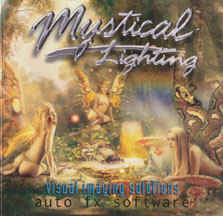
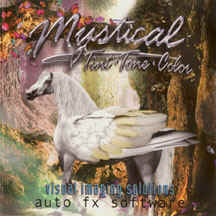
Howard David
Johnson whole-heatedly endorses Adobe Photoshop (TM) Software. He
collaborated with Auto Fx Software to offer some of the most exciting
sets of Adobe Photoshop Plug- ins and filters ever! Digital
artists- these are the ones you've been waiting for!


ALL HALLOWS EVE is a Prismacolor Painting & SLEEPING
BEAUTY is an Oil Painting. Howard David Johnson works in a wide variety
of media * Oil paintings * Acrylic Paintings * Prismacolor Paintings *
Drawings * Chalk & Oil Pastel Paintings * Photography * and last
but certainly not least: Digital Artistry & Mixed Media *
ANATOMY OF A
MIXED MEDIA DIGITAL ILLUSTRATION
by Howard David
Johnson: incorporating Drawing, Painting, Photography and Digital media:
I usually
start with a thematic concept followed by a realistic pencil
sketch, then followed by photography, often traveling to find suitable
scenes and locations and working in my Photography studio with live
models. I then assemble a variety of elements which are realistic and
original. Before 1999 I used xeroxes and tracings to make my pre
production photo montages. This is patterned after the manner
used by Maxfield Parrish, John William Waterhouse, and many other
notables. For example, I shot hundreds of aerial photos of clouds at
marvelous angles and perspectives and also looking down on the
mountains, rivers, and deserts of the American west while flying from
Texas to Oregon and back for source material for more realistic
flying scenes in upcoming paintings and pictures. Beginning with
a tracing, I then draw or paint from these complex original Photo
Montages in a variety of realistic traditional art media.
|

|
I rarely use
the same combinations of mixed media twice. For this particular
commercial illustration, I Painted and drew the elements outside the
computer and scanned them in for an exciting blend of traditional art
media, photography, and computers. The background was painted with oil
on panel with Japan drier in it to accelerate from three weeks to three
hours. Then marine varnish is brushed on ( many other new varnishes
won't work as they are NON-yellowing) , also with the drier added in
much higher percentages than the label recommends so the brush strokes
will dry hard. Then shoe polish is added to accentuate the texture. A
heat gun is often used to create cracking effects to add to the "Old
Master's Painting" look. A perfect brand new painting just isn't the
same. |
The crystal ball
is entirely digital. Digital airbrush inside an elipse marquee treated
with faded watercolor filters and touched up with digital
paintbrush.
|
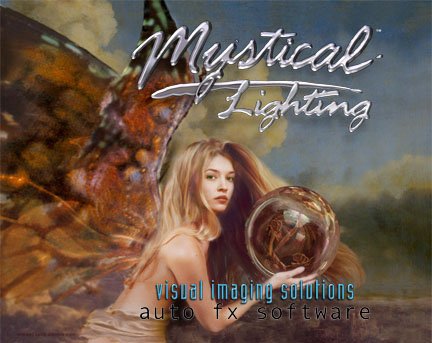 The Dragon scene was mechanically copied, distorted and imported
from one of my previously completed pieces of Traditional Original
Fantasy Art
The Dragon scene was mechanically copied, distorted and imported
from one of my previously completed pieces of Traditional Original
Fantasy Art
|
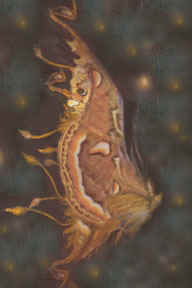
The Faerie
wing is hand rendered on Bristol board with colored pencil and soft
chalk pastel. It is then scanned into the computer to be rendered in
Adobe Photo Shop or Meta Creations Painter...
|
|
|
|
|
The only
thing my college art professors all agreed on, it was, "if you are
going to use photos as reference for art, use more than one..." Here
Supermodel Ann Cameron is hold a World War Two helmet to get the hand
poses right as there was no crystal ball handy. The dangling hair is
simply rotated to create that "classic wind blown look". The face came
from yet another shoot altogether. I make the photos work for me when I
use them as source material creating something new even though I take
my own photos and own the rights. Great care must be used when
publishing work using any of the pictures of others, something for
which there are clear legal guidelines for. In your practice, you
may copy anything that inspires you. Many great artists perfected their
technique by doing exact copies of their favorite masters.
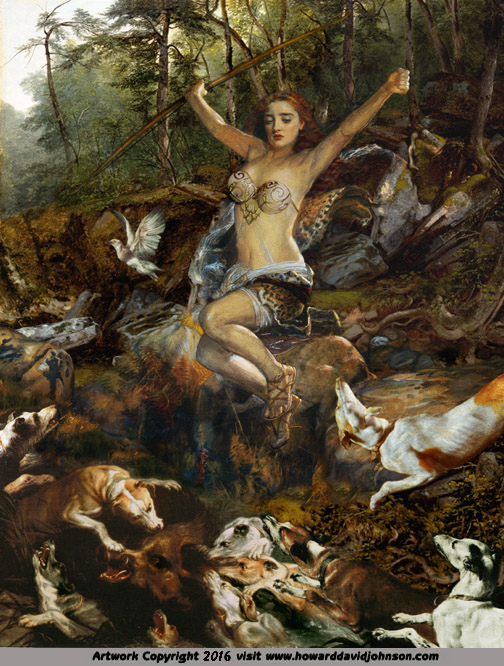
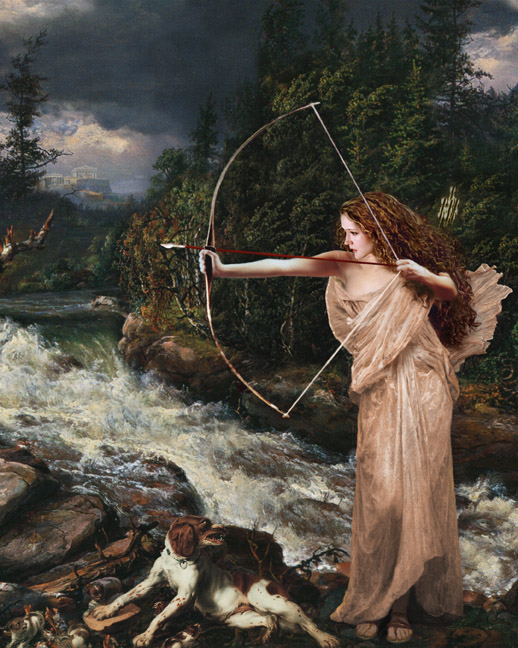
Allow
me to explain why digital has become the preferred media of the
publishing industry: First of all, there’s the speed and the
freedom from fear! The undo button is empowering and liberating!
More
importantly, publishing
customers can't afford to pay me for old-fashioned traditional methods
like oil on canvas. I can do them, and do them well, but no one but
millionaire art collectors can afford to pay even poverty level hourly
rates for all that time.
The masters often took a year or more for a single painting.


With
digital media I can create pieces that look very nice for very nice
prices and with blazing speed. The publishing industry is not noted for
its patience. In the early days of my art career, mailing traditional
media originals was scary at best, but now they can be scanned and
shipped without risk.
Also
in my early days adding canvas space to a work in progress was as
impossible as growing a second head... but now it is so easy I usually
don't even charge extra to adapt them if its just skies or landscapes!
Re-dos and revisions were financially catastrophic! No wonder the
starving artist became a stereotype! Before the internet, I struggled
to find customers in Austin Texas but now I turn them away picking and
choosing the most interesting assignments from the entire world as a
marketplace. Every nation on Earth has visited my website! This was
beyond my wildest imaginings as a boy. What an amazing era we live in!
I love it!!! I am persuaded It will only get better!
~ Howard David Johnson
*****
With regards
to judging your own work;
|
|
First you should consider
the figures whether they have the relief which their position
requires, and the light that illuminates them, so that the shadows may
not be the same at the extremities of the composition as in the center,
because it is one thing for a figure to be surrounded by shadows, and
another for it to have the shadows only on one side. Those
figures are surrounded by shadows which are towards the center of the
composition, because they are shaded by the dark figures interposed
between them and the light: and those are shaded on one side only which
are interposed between the light and the main group, for where they do
not face the light they face the group, and there they reproduce the
darkness cast by this group, and where they do not face the group they
face the brightness of the light, and there they reproduce its
radiance.
Secondly, you should consider whether the distribution or arrangement
of the figures is devised in agreement with the conditions you desire
the action to represent. And thirdly, whether the figures are actively
engaged on their purpose.
|
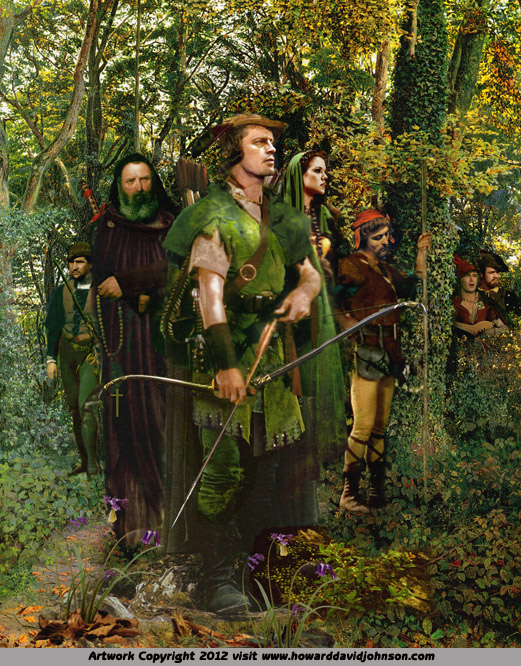
|
There are those who believe artists who use mechanical aids
can't draw free hand and demand artists all prove their talent first by
drawing WITHOUT any mechanical aids. Hilarious. These pencil drawings
below and HUNDREDS of others I did in the 1970's WITHOUT tracing
settled this issue forever when I was a teenager.
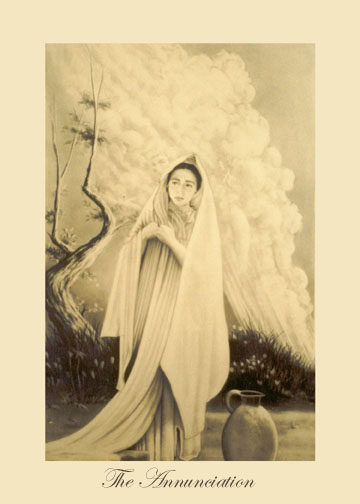

I was
against mechanical aids myself in those days, but when I found out that
ALL the artists I admired most used all the mechanical aids at their
disposal, and I had not been told this, I started using them myself.
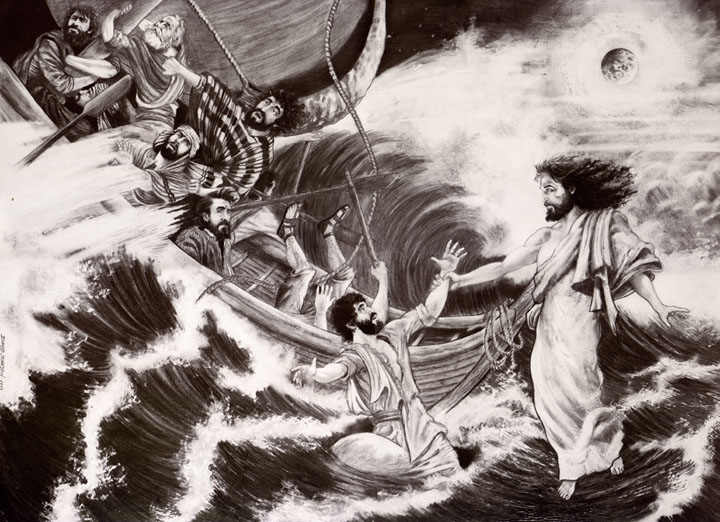
"Jesus walking on the
Sea" Graphite 1978 was done without any mechanical aids of any
kind or reference whatsoever. Those of you who feel the need to judge
my talent, just compare it with Michelangelo's work done at the same
age. I think talent is overrated and hard work is a hundred times more
important than talent when it comes to creating good art. I've known a
lot of talented people who were so lazy that hard workers with next to
no talent and a teachable spirit easily surpassed them. For more
on Art & Technology, read on...
|
Enter a world
of Beauty and Imagination...

INDEX of GALLERIES ~ LINKS to LARGER ART
The
Realistic and Fantastic Art Galleries of Contemporary American
Illustrator Howard David Johnson
Click on
these Fun Educational
Realistic Art Gallery link icons for Two-fisted Tales of VALOR
&
Frontline Combat featuring Legendary Warriors of History, Knights and
ladies of
Arthurian Legend, Celtic, Nordic, Asian and Olympian gods &
monsters,
unicorns, dragons, fairies... and more!

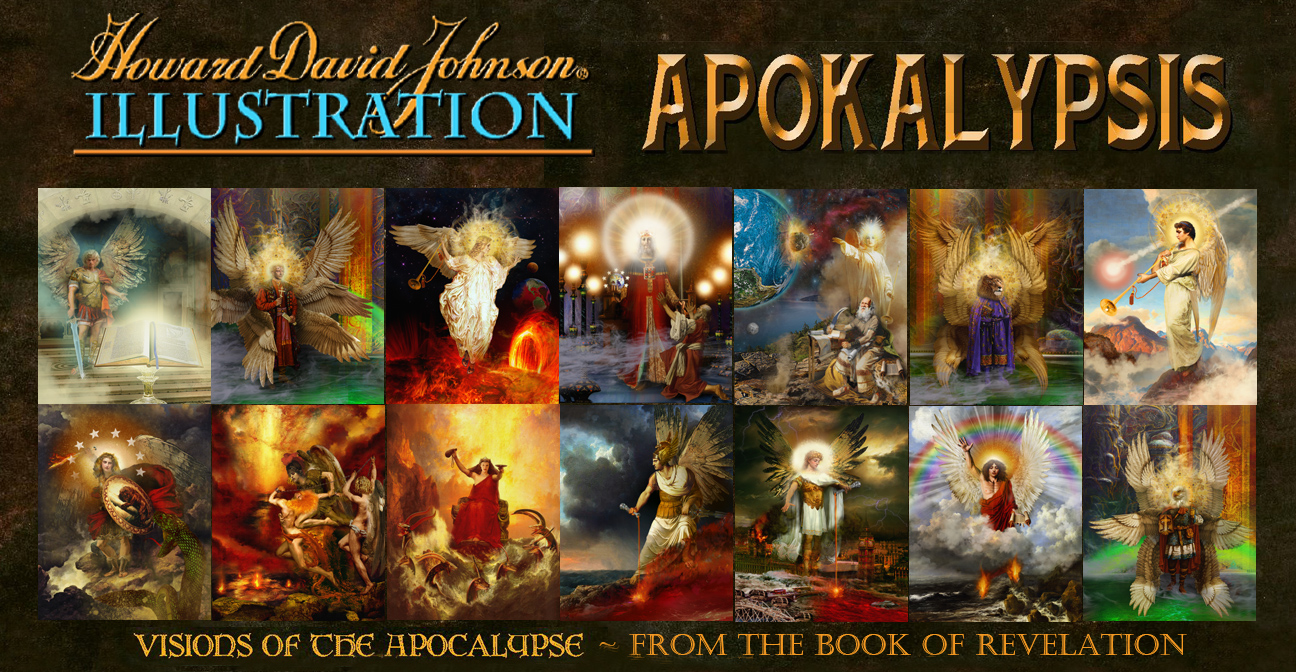
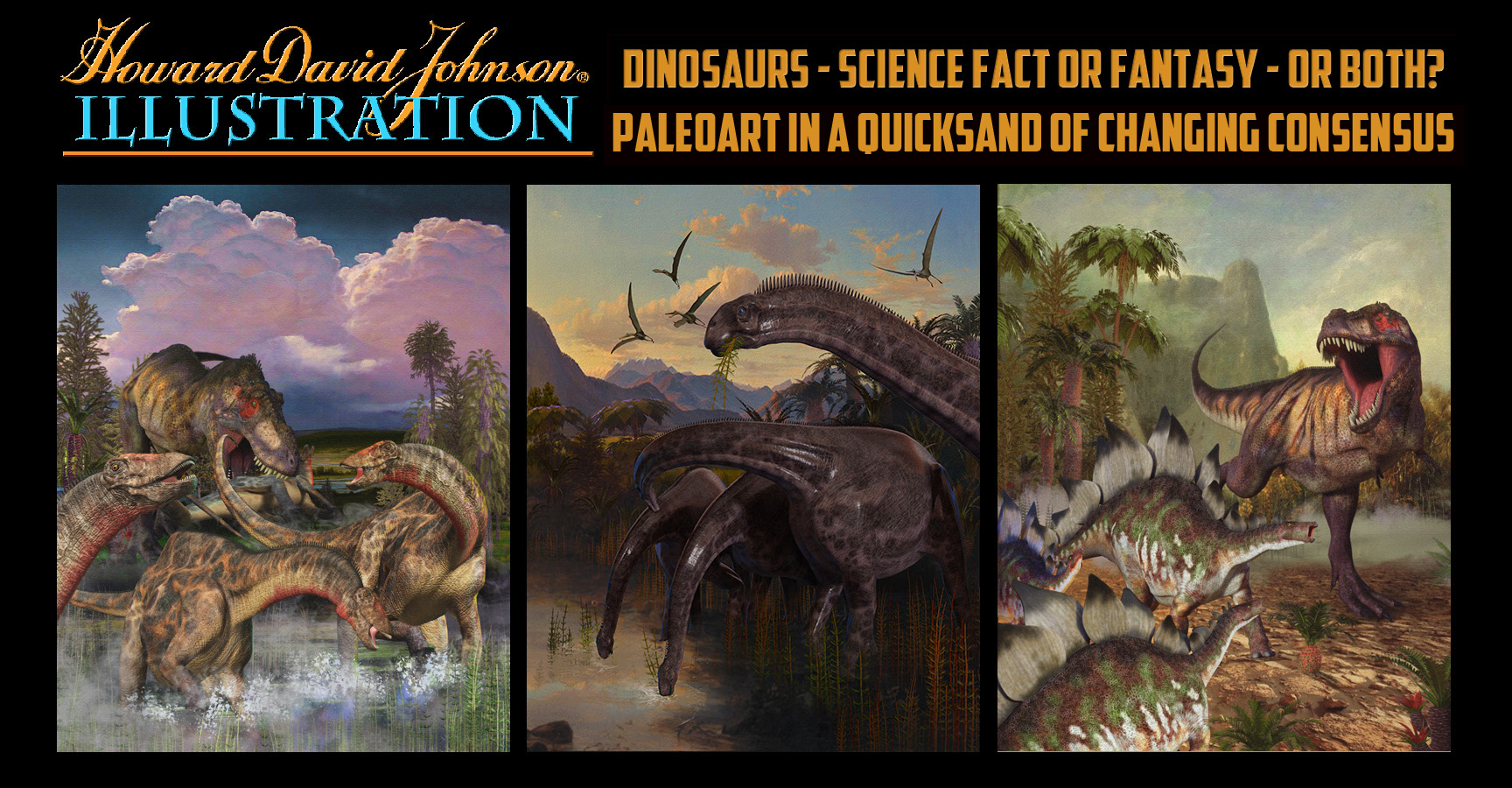
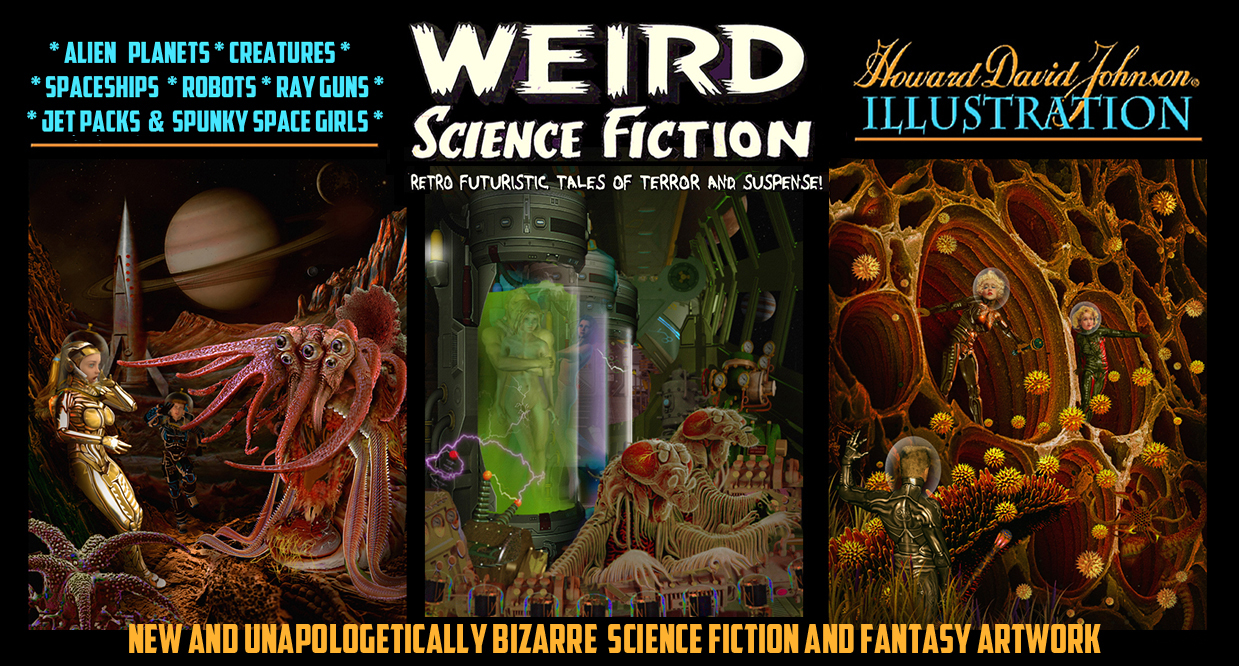
All these pieces of art and the
text are legally copyrighted and were registered with the U.S.
Library of Congress Office of Copyright by the author, Howard David
Johnson All rights reserved worldwide. Permission for many academic or
non-commercial uses is freely and legally available by simply
contacting the author via e-mail or visiting www.howarddavidjohnson.com/permission.htm
|
|
Celebrating
20- plus Years on the World Wide Web 1996- Today!
With a background in traditional media
including oils, pastels & colored pencils, Howard David Johnson
embraces leading edge digital media in the creation of his depictions
of fantasy, folklore, mythology, legend, religion, and heroic history.
He works in a wide variety of
media * Oil paintings * Acrylic Paintings * Prismacolor Paintings *
Drawings * Chalk & Oil Pastel Paintings * Photography * 2D &3D
Digital Artistry & Mixed Media *
Business
and Retail
Services:






Who is American
Illustrator Howard David Johnson?
In one of David's
invitations to the
Florence Biennale Contemporary Art Exhibition, (a partner in the United
Nations'
Dialog among Nations), UN Secretary General Kofi Anon wrote him:
"Artists have a special role to play in the global struggle for peace.
At their
best, artists speak not only to people; they speak for them. Art is a
weapon
against ignorance and hatred and an agent of public awareness... Art
opens new
doors for learning, understanding, and peace among nations."
|
|
Howard David Johnson is
a contemporary realistic artist and photographer with a background in
the natural sciences and history. David works in a wide variety
of mixed media ranging from oil on canvas to digital media. David's realistic illustrations
have made appearances in every major bookstore and game shop chain in
America as well as magazines and educational texts around the
world.
Some of David's more prestigious clients have included the
University of Texas, the Universities of Oxford and Cambridge in
England, The Australian Mint, The National Geographic Society,
Paramount Studios, Universal Studios, MGM Studios, Warner Brothers Home
Video, ABC/Disney, CBS TV, PBS TV, The History Channel, Enslow
Educational Publishers, Adobe Photoshop, Auto FX, Tree-Free Greeting,
Verizon wireless, Apple IPOD, Penguin, Doubleday (Now Random House),
Harlequin Top Historical Romances, and the History Book of the Month
Club, as well as appearing in periodical publications like Popular
Photography and the Wall Street Journal.
|

A Traditional style portrait
of the artist. [Photo by his son Erich.]
|
After a lifetime of
drawing and painting, David's
Traditional Art was exhibited in the British Museum in London in 1996,
( 3 years before he got his first computer ) as well as numerous
American ones since, such as the Metropolitan Museum of Art.
Working in a variety of
media David offers his customers a variety of options and more than
three decades of experience. As an illustrator he has not only used the
computer but has been involved in the development and marketing of
software for Adobe Photoshop. Digital art, Colored pencils, Pastels,
Mixed media, & also Oil Paintings can also be commissioned for
select projects.Digital illustration projects
start at $500.U.S. and group rates are available. David delivers custom
made copyright free illustrations & old fashioned customer service
when he does work-for-hire. To publish existing pieces of his
realistic art, David sells licenses starting at only $99.USD.
|
|
|






You can e-mail for more details at:
info@howarddavidjohnson.com
Your
business, letters and links are always welcome!
|
|
This Gallery
has been
honored by more than 35,000,000 Unique Visitors
from the
Four
Corners of the Earth
My
Friends from around the world thus far :
England,
Canada,
Scotland, Wales, Ireland,
Germany, France,
Monaco, Andorra, Italy, The Vatican
City State,
Greece, Macedonia, Cyprus, Turkey,
Belgium, Denmark,
The Faroe Islands, Greenland, Yugoslavia,
Macedonia, Croatia, The Czech Republic,
Bosnia, Herzegovina, Slovakia, Slovenia,
Luxembourg, Latvia, Estonia, Hungary, Bulgaria,
Lithuania, Poland, Austria, Romania,
Spain, The Russian Federation, Estonia,
Ukraine, Kazakhstan, Moldova, Malta,
Iceland, Finland, Norway, Netherlands,
Switzerland, Liechtenstein, Sweden, Portugal,
Albania, Armenia, Georgia, Slovak Republic,
Azerbaijan, Belarus, Kazakhstan, Gibraltar,
Israel, Palestinian Territories, Egypt,
Libya, Mali, Algeria, Niger, Saudi Arabia,
Oman, The United Arab Emirates,
Kuwait, Bahrain, Qatar, Yemen, Iraq,
Iran, Jordan, Syria, Lebanon,
Morocco, Ethiopia,
Eritrea, Liberia, The Republic of
Congo, Rwanda, Kenya, Angola,
Ghana, The Ivory Coast, Zambia, Zimbabwe,
Sudan, Nigeria, Namibia, Sudan,
Uganda, Kenya, Eritrea, Tanzania,
Botswana, Malawi, Senegal, Djibouti, Cameroon,
Chad, Gambia, Mozambique, Swaziland,
Lesotho, South Africa, Seychelles, Viet Nam,
Japan, South Korea, China, Hong Kong,
Macau, Mongolia, Mauritius, Singapore, Thailand,
Cambodia, Laos, Myanmar,
Macau, Malaysia, Taiwan, Nuie, New
Zealand, Fiji,
Cook Islands, New Caledonia, Vanuatu, American
Samoa, Australia,
Micronesia, Polynesia, Papua New Guinea, The Heard
and McDonald Islands,
The Philippines, Guam, Palau, Cocos Island, The
Kingdom of Tonga,
Malaysia, Brunei Darussalam, India,
Pakistan, Afghanistan, Bhutan,
Bangladesh, Sri Lanka, Chagos Islands, The Republic
of Maldives,
Turkmenistan, Kyrgyzstan, Uzbekistan,
Tajikistan, Azerbaijan, Nepal,
Indonesia, Chile, Argentina, Uruguay,
Paraguay, Brazil, Peru, Aruba,
Venezuela, Bolivia, Suriname, Guyana, Aruba,
The Dominican Republic, Guatemala, Costa Rica,
Colombia, Trinidad and Tobago, Antigua and
Barbuda, Barbados, The Virgin Islands, Saint
Lucia, The Netherlands Antilles, Panama,
Northern Mariana Islands, Saint Vincent &
Grenadines, Grenada, Ecuador,
Belize, Nicaragua, El Salvador,
Bermuda, Cuba,
Jamaica, Dominica, Haiti, Puerto Rico, Cayman
Islands, The Bahamas, Honduras,
Mexico,
Madagascar, Central African Republic, Ethiopia,
Gabon,
San Marino, Saint Kitts & Nevis
Anguilla, Burkina Faso, Equatorial
Guinea, Polynesia, Madagascar,
Mauritania, Burundi, and my home, The Great
Free State of
Idaho (USA)...
If your home
is not listed here please
e-mail and tell us where you're from...
info@howarddavidjohnson.com
Your
business, letters and links are always welcome!
|






|

Gorgeous Quality
Printing
Hand
Signed & Numbered
Free
Shipping Worldwide

|

LIMITED
EDITION
[of a maximum
1,000 prints per image]
PRINT-ON-DEMAND
Each inspected,
hand signed and numbered by the artist!
CLICK
HERE
TO BROWSE OVER 400 CHOICES
CHECK OUT
FAST WITH PAYPAL!

thejohnsongalleries@gmail.com
Sized to fit
standard sized frames!

ASK ABOUT GIFT
CERTIFICATES
|

The Johnson
Galleries prints these "in-house" with our new state of the art Epson
7890 oversize printer on
Epson 200 year premium photo paper and canvas with Epson inks!

|
|
Essay
Section:
Philosophy, Art, & Art Philosophy
Personal
Opinion Essays on Realism yesterday and today by the artist.
Howard David Johnson is an outspoken
proponent of mechanical aids to visual art. Unlike the opponents of
mechanical aids, his mission is not to prove his talent but to help
preserve our vanishing Western cultural heritage. In addition to his
mastery of the traditional media, now combines drawing, painting,
photography, and digital media with more than thirty years of
experience in these fields to create his Realistic Art Numerica in 21st
century paintings and pictures. Did you know the Greek word
"Photography" means "Painting with Light"? Today with the advent of
computers it truly lives up to it's name. Due to developments in Art
and Technology, a broader definition of painting is needed than that
which is found in common usage. Introducing Art Numerica- an exciting merger of
traditional visual art and cutting edge technology... a new art form
for the twenty- first century... Art Numerica is not limited to
realistic art but also offers limitless horizons for everything from
cartoons to abstractions.
It is the most dramatic development in the visual arts since
the Renaissance.
|
|
Essay Seven: NEW!
On Art and
Technology: When Seeing is Not Believing
An essay
dealing with mechanical aids to visual art from Camera Obscura to
Computers
When the camera
was finally made commercially available in the 1830's it exploded on
the world scene and sent shockwaves through the art world as history
had never seen before. Visual artists all over the world were suddenly
put out of work and resentment and outrage followed. Suddenly much more
realistic portraits could be had at a tiny fraction of the cost of a
painting and delivered almost instantly. The art world would never be
the same. When motion picture cameras were new, seeing was believing
and human consciousness changed forever in the 20th century. Sometimes
even Terror and Panic came from the initial shock! In 1905 cinema
patrons defecated and urinated in their seats as they broke each
other's arms and legs desperately fleeing for their lives from a
crowded theater to escape a train charging straight for them! ... train
footage filmed safely from a bridge with a camera lowered down on a
rope. A modern cinema patron would not even feel uncomfortable. The
Photograph and its manipulations have changed human consciousness and
history... and will continue to do so in the future.
The Camera has
changed everything.
The
Camera of Today owes it's origin to the Camera Obscura, a light- tight
box with a lense and a screen that receives an image. This device has
been used by artists since ancient times to trace the projected image
of whatever they set before it on a screen. Intrigued by the idea of
producing a permanent light-formed image instead of reproducing it by
hand, a long line of inventors studied the problem and successively
made contributions to the solution.
Photography was neither discovered nor invented by any one man. It was
the outcome of the early observations of the alchemists and chemists on
the action of light, a subject that belongs strictly to the domain of
photochemistry. Although the blackening of silver salts was known in
1565, it was not until 1727, when Johann Heinrich Shulze of Germany
used a mixture of silver nitrate and chalk under stenciled letters,
that it was definitely recognized that this darkening action was caused
by light and not by heat. In the years that followed experiments with
silver nitrate on leather and wood were successful. In 1817 J.
Nicephore Niepce first tried photography with silver nitrate and paper.
In 1826, L.J.M. Daguerre, a painter who had experimented with silver
salts approached him and formed a partnership.
Daguerre discovered accidentally that that the effect produced by
exposing an iodized silver plate in a camera would result in an image
if the plate were fumed with mercury vapor. The Daguerreotype process
was a complete success. These chemical processes would be improved
again and again until the advent of the digital camera we know
today. The attitude that Photography was not art and was a purely
mechanical process requiring no talent whatsoever was put forth with
great force and hostility in an attempt to get people to refrain from
choosing it for their portraits instead of paintings. This is a typical
reaction to new technology, when Pastels were first invented they were
dismissed as a child’s plaything rather than a viable art medium. These
attacks on new technology are not limited to the arts of course. When
the Wright brothers were making history at Kitty hawk with the first
manned airplane their detractors said: "If man were meant to fly, he'd
have been born with wings." This kind of negativity is just human
nature to some kinds of people.
Photography came into
being through an artistic, not a scientific urge. Daguerre was an
artist, a scene painter whose illusionistic diorama was a landmark in
Paris long before his name was connected with photography. Critics were
merciless as usual, with scathing condemnations of the media. However,
in the hands of a sensitive artist, photography quickly showed it's
artistic possibilities. David Octavious Hill, a Scottish Painter
invented the camera set up and the pose as we know them today in the
1840's and was the first of a new breed of master photographic artists.
Photography was here to stay. Diverse forms of retouching techniques
followed both by accident and by design and took the medium to new
levels of artistic excellence. Now, more than a century and a half
later only an uneducated or blindly hateful person would say
Photography is not an art form. Of course we've all seen our share of
awful pictures with the heads cut off taken by amateur photographers
but we've also seen the work of studio masters like the great portrait
photographers from Hollywood in the 1930's and forties. Anyone who has
tried to create such a sophisticated studio photograph realizes quickly
that this is a very difficult art form to master even if a trained
orangutan can take a bad snapshot with an instant camera made for
children.
The use of Photography as
a mechanical aid to traditional oil paintings and other forms of
realistic art came right away. This is not surprising since artists had
been tracing from Camera Obscura for thousands of years. Famous Myths;
Leonardo Da Vinci ( 1452-1519 ) is often credited with the invention of
Camera Obscura because he used it for his masterworks during the
Renaissance and mentioned it in his notebooks, but this is simply not
true. Similarly, Americans are credited with the camera, but it is also
not true. Origins: Unlike the camera, the inventor and time of
invention of Camera Obscura are unknown. Perhaps a crude form of it was
known to the ancient Greeks, but there is no material evidence to
substantiate such a point of view. The mathematical precision and
perfect anatomy of Greek art combined with their passionate love of
science and mathematics is testimony enough for many scholars. The
earliest clear description of Camera Obscura occurs in the great
optical treatise of the Islamic scientist Al-Hazen who died at Cairo,
Egypt in A.D. 1098. His Opticae Thesaurus ( Book of optics ) was
rendered into Latin sometime during the 12th or 13th century by an
unknown translator. Al- Hazen honestly declares that he himself did not
discover it, so we know from this it had to have been masterminded
before A.D. 1098.
| Camera obscura
is a device for tracing or sketching large objects. It consists of a
box painted black inside- a mirror at a 45 degree angle , and a lense,
like that used in a photographic camera. An image is thrown on the
mirror by the lense and reflected on the screen, where it can be
sketched with tracing paper. The Camera Obscura was in general use by
newspaper and magazine il! lustrators until it was replaced by the
photographic camera. Make no mistake. Professionals have been using
mechanical aids since the first caveman shaman traced his hand out on
the wall of his cave. The view finder on the reflex camera is a
development from Camera Obscura. Camera obscura, interestingly enough,
is Latin for "darkened chamber". |

|
In the early
1600's the telescope came into use and Camera Obscura spared viewers
the harmful effects of gazing directly into the sun. I regret, but that
we must acknowledge the fact that almost every art medium throughout
the ages has been corrupted. In the 2nd century, the Roman emperor
Hadrian had the head of his lunatic predecessor Nero removed from a
statue and replaced by that of his favorite. Much later in 1539,
Holbein painted a glamourous and flattering portrait of Anne of Cleves
for Henry VIII. When the future queen arrived in England, King Henry
met the surprisingly less than dazzling and glamorous Anne. His
dissapointment made history. Our modern society certainly can't claim t
he honor nor take the blame of being the first to manipulate art forms.
By the 21st century instead of the traditional assistants and
apprentices, artists employed overhead transparency projectors, opaque
projectors, artographs, light tables, slide projectors, color
photocopying... and suddenly, computers and image editing software,
which brings us to some very compelling controversies regarding these
modern imaging technologies and their impact on various media and
further changes to human consciousness. For example: The integrity of
Photography as evidence in our courts of law stood for many decades
until it was shattered by the digital manipulation of photographs and
new standards needed to be introduced. Websites sold peeks at
photos of celebrities' heads pasted onto photos of wild women in
scandalous poses for all the world to see- but advertised as real
celebrity pix. Scandal rocked television and other news media when
digitally altered photographs were being passed off as reliable
evidence of important news stories...
On a positive note, no one was threatened by how this technology
enabled motion pictures to do epic things they could only dream of
before. They were supposed to be make-believe images appearing real! A
golden era in special effects cinema ensued. Then, this powerful
digital imaging technology, like the camera, fell into the hands of the
common man through computer programs like Adobe Photoshop. A new
culture of skepticism had abandoned the age old adage; "seeing is
believing" Photography has never told the whole truth, just parts of
it. Photography is also an art form and therefore rightfully
susceptible to creative alterations. In addition, the advancement of
digital manipulation technology cannot be undone or halted. I believe
that we must recognize that this digital technology exists on a
gigantic-scale, and will never go away. Therefore, I suggest that
digitally altered photos are distinct from traditional photography, and
should be treated as such.
Contrasting views:
anti-manipulation advocates’ fear a negative impact of digital
manipulation in a court of law, and pro-manipulation advocates say that
we must wake up to the fact that for for decades pictures have not been
reliable evidence in court and that any good lawyer will attempt to
discredit photographic evidence. In response to claims that photos
should always tell the truth, the pro-manipulation camp would say that
photos have never told the unvarnished truth. A camera shows, and has
always only shown, a fraction of reality, and even then what we see is
taken out of context or even fabricated. Photography from its onset has
been subjected to modifications. In 1839, the Frenchman Louis-Jacques
Daguerre patented the daguerreotype, or what could be called the first
"picture." Simply explained, the daguerreotype combined the usage of
the camera obscura and silver iodide to produce a permanent image on a
copper plate. A very exciting innovation, Daguerre boasted of it, "With
this technique, without any knowledge of chemistry or physics, one will
be able to make in a few minutes the most detailed views"
("Photography"). Almost immediately, the daguerreotype, especially
daguerreotype portraits, became immensely popular. Its popularity, of
course, can be attributed to its novelty, but also because people
believed the daguerreotype produced a more real image than a painting.
The general attitude toward the daguerreotype was that it could create
images more realistically because there was no artist to interpret and
modify it in his own style.
Opponents
of Digital Manipulation insist Photography should always represent the
truth, asserting Photography's first and foremost function is to
portray reality. Many assume that photographs have never been
manipulated, and that this recent outbreak in digital technology
damages the integrity of photography. Without delay, anti-manipulation
proponents demanded an end to all "dishonest" photography, as it
severely misleads the public. Also, they view digital manipulation as a
purely mechanical process, with no talent or skill involved.
Furthermore, anti-manipulation proponents fear manipulated photos might
acquit murderers or rapists in courts of law. The thought that
photography had replaced painting abounded. "As if photography needed
to absolve itself from its ‘original sin’--of having brought about the
death of painting", a movement known as pictorialism thrived around
1890-1914, the Art Nouveau period. Proponents of pictorialism primarily
set out to gain the recognition of photography as an art rather than
just a mechanical process. The pictorialists fashioned bizarre and
oddly focused images in order to prove photography was indeed a
creative art. It was here that such concepts as shading and enhancing
during development appeared. Because of these new shadings and angles,
it can be said that Art Nouveau saw the dawn of "Photo manipulation."
So the manipulation of photography actually began early in the the 20th
century.
In 1982 there was outrage over the manipulation of the Great Pyramids
on the cover of National Geographic but the Genie was out of the
bottle. There was no going back. In the 1990’s Computer programs like
Adobe Photoshop began to be available to the general public. Now, even
someone with little or no talent could produce delightful works. On the
other hand, sensitive artists could produce masterpieces on a scale
undreamed of. It seems clear that using this technology to willfully
falsify photographs for slanderous, scandalous, or persuasive ends is
morally wrong, but what about using it to create obvious unreality that
looks real or Fantastical Realism in art as in pictures of fairies or
mythic creatures?
What is realism? Realism
in Art and literature has always meant that the artist attempts to
represent persons, scenes, things, and facts as they are, life as it
is. The word is used in many senses- as opposed to romanticism, to
conventionalism, to sentimentalism, to idealism and to imaginative
treatment. Sometimes it is a term of praise, and sometimes it is a term
of derision. During the 19th and 20th centuries the use of the word
realism often implied that the details brought out were of an
unpleasant, sordid, obscene, or generally offensive character. Even the
greatest illustrators of the day were ridiculed. Realism is commonly
applied to a 19th century school of writers and artists; but realism,
in it's prime and proper sense, is as old as art and literature
themselves, but in the hands of it's most notorious exponents, it
quickly degenerated into a connotation of the more sinister features of
realism.
Many 20th century contemporary realists and artists working in the
Photo Realism style were trained in an educational system openly
hostile or dismissive to Classical realism and art tradition and were
only taught the tenets of Abstraction and Expressionism. As a result
many of these artists are more akin to the abstract and expressionist
schools than the "Classical Realism" of the ancient Greeks, which
adored beauty and nature. Contemporary Realism does not embrace the
math and design of the Classical school but does not frown on beauty.
Photo Realism only strives to look as much like a photograph as
possible and sometimes the results are shocking or disturbing. Other
times they are mundane and so ordinary as to be boring. They often
deliberately decline to select subjects from the natural, beautiful,
and harmonious and more especially, depict ugly things and bring out
details of an unsavory sort for social and political purposes. The real
mission of Photo-realism is not to record everyday life like a Norman
Rockwell painting, but to expose the unconscious way we look at and
accept photographs.
By the 20th century
realism had spread to nearly all nations- realistic elements combined
with those of Impressionism, Symbolism, and other movements. Fantastic
Realism on the other hand, is born of these movements and tied to them
in style and technique, but prefers to explore subjects that are
strange or strikingly unusual rather than scenes of everyday life or
objects. It is often bizarre in form, conception and appearance and
even wondrous in its beauty. Sometimes macabre and grotesque, it is
rarely boring like the other forms of Realism in visual art so often
are. Fantastic Realism can be completely apart from reality, yet
appearing to be quite real. It is versatile in that it can combine with
or be a part of the Classical, Contemporary or Photo-realistic schools
or stand as a style unique unto itself. I combine elements from all of
these schools of Realism and then take it a step further by also
combining a wide variety of media from traditional oil paintings to
today's cutting edge digital media in my exhibits. Naturally, the
darker side human nature shows itself again with condemnation of new
schools of expression, and new art media and technology. Like the
photographers before them, digital artists wanted the recognition of
their work as an art rather than just a mechanical process. Unlike the
snapshot camera or an abstract painting, a trained chimp or orangutan
cannot do it: it takes the same visionary and eye to hand skills as any
traditional art media to do it well.
Since the
times of the ancient Greeks, Art History records a relentless quest for
Realism and artistic excellence. The masters of each generation strove
to perfect their craft, then passed on the torch of their accumulated
knowledge and skill to the next generation.
The accomplishments and
technological breakthroughs of one generation have often set new
standards of excellence for the next.
~ Howard
David Johnson MMIV
*****

Gates of Fire by Stephen Pressfield
(Danish Cover)
STYLE
and TECHNIQUE
"Those who
are enamoured of practice without science are like a pilot who goes
into a ship without rudder or compass and never has any certainty where
he is going. Practice should always be based upon a sound knowledge of
theory, of which perspective is the guide and gateway, and without it
nothing can be done well in any kind of painting."
| Howard
David Johnson is a contemporary visual artist and photographer with a
background in |
| the
natural sciences and history. He works in a wide variety of media
ranging from traditional |
| oils,
pastels and others to cutting edge digital media. He loves mixing
media. This site features |
| examples
of his Realistic Art, including illustration, photography,
experimentalism, and fine art. |
|

|
The various
galleries linked to by the icons above show many examples of His
Realistic Art, and are grouped by theme rather than media. There are
also sample illustrations from his upcoming books on Celtic Myth
and Legend and World Myth & Legend. Since boyhood he has
passionately copied the old masters. To create his work, he usually
starts with a thematic concept followed by a rough realistic
pencil sketch, then followed by his photography, often traveling to
find suitable scenes and locations and then working in his Photography
studio with live models from his sketches. He then assembles a variety
of elements which are realistic and original. As a boy he
dedicated his life to art in 1960. From 1965- 1999 he used xeroxes and
tracings to make his preliminary photo montages. This is patterned
after the manner used by Maxfield Parrish and other 19th century
notables.
|
|
Beginning with a tracing, he then draws or
paints from these complex original Computer Photo Montages. Many of
these are on display on this web and slated for future completion in a
variety of realistic traditional art media. As this happens, the
finished work is substituted in the exhibit. Recently he shot hundreds
of aerial photos of clouds at marvelous angles and perspectives and
also looking down on the mighty mountains, rivers, and deserts of the
American west while flying from Texas to Oregon and back for dynamic
source material for realistic flying scenes in upcoming paintings ,
drawings, and pictures. His favourite medium for realistic art is
colored pencil because of the high speed and low expense, and people
began expressing difficulty in telling his colored pencil drawing from
photographs in the early 1980's. In the last 35 plus years he has
also mastered Oils, Pastels, Acrylics, Watercolors, Inks, Scratchboard,
Gouache, Photography, and the highly controversial digital media (
Art Numérique ) . As a commercial illustrator Johnson has not only
used the computer to create art but has been involved in the
development of computer imaging software for Adobe Photoshop. Working
in a realistic style inspired by classic illustrators HDJ is deeply
rooted and grounded in the Greco-Roman artistic tradition, Feeling that
with realistic art, the human form is the ultimate arena for artistic
expression. His lifelong dream came true when his Traditional Realistic
Art was exhibited in the British Museum in London England in 1996. His
mixed media has also been displayed in numerous other ones since
such as the Metropolitan Museum of Art. Having achieved international
acclaim as a traditional visual artist he discovered digital media (
Art Numérique ) in 1999. Because of his passion for realistic art
and photography he elected to embrace it and joyfully be a part of this
historic era in the visual arts as a 21st century realistic visual
artist.
Since 1972 when he began his career as a scientific illustrator for the
University of Texas he has earned his living illustrating all kinds of
books, magazines, CD covers, and all sorts of games, greeting cards,
calendars, portraits, murals and the like with his contemporary
realistic art... HDJ's Realistic Art has appeared in every major
bookstore chain and fantasy gaming shop in The United States and has
been used in educational texts and magazines all over the world. This
site features realistic paintings & pictures for the twenty-first
Century including some oil paintings, as well as lots
of other exciting media such as colored pencil drawings, pastel
paintings, acrylic paintings, gouache paintings, watercolor paintings,
and pencil drawings, and also featuring studio, field, &
aerial photography, digital painting and photo-montage and all
these media mixed in an assortment of experimental
combinations...Working in a wide variety of media to create his
realistic art he offers his customers a host of payment and product
options. He delivers the rights to these custom made copyright free
illustrations and old fashioned customer service when he does
work-for-hire. He loves to paint custom oil paintings and accepts
commissions with down payments starting at one thousand dollars. On his
existing works his low cost license offers start at only 100 dollars.
*****
|
|
|
Essay One:
"THE MORE THINGS CHANGE, THE MORE THEY STAY
THE SAME..."
(A
Brief essay dealing with attitudes toward Traditional Realistic
Paintings, Pastels, Colored Pencils and Art Numérique )
|
"Painting,
in art, the action of laying colour on a surface, or the representation
of objects by this means. Considered one of the fine arts"
~Encyclopaedia
Britannica.
"Painting.
noun. 1.) The act or employment of laying on colors or paints. 2.) The
art of forming figures or objects in colors on canvas or any other
surface, or the art of representing to the eye by means of figures and
colors any object; the work of an illustrator or painter. 3.) A
picture; a likeness or resemblance in shape or colors. 4.) Colors laid
on. 5.) Delineation that raises a vivid image in the mind; as in word
painting.
~
Webster's Unabridged Dictionary of the English Language
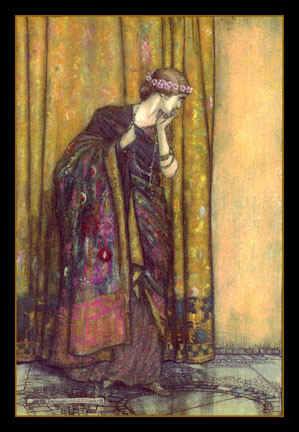
Pastel, Acrylics, and
Colored Pencils combined
|
Snobbism in the arts is nothing new. Some people will tell you that
oils are the only valid medium for realistic paintings. That Colored
Pencil, Digital, and other Realistic Painting and Drawing Media are not
valid for "real" art. Young artists, Don't let them bother you.
Their forerunners used to condemn Pastels before they gained acceptance
and called them "crayons" when Johann Alexander Thiele (1685-1752)
invented them. Mercilessly disrespectful art critics of the
time could not stop the Experimentalists no matter how viciously they
attacked and derided them. "Crayon-painting" as it was called in
England was practiced early on by persecuted pioneers in Switzerland
and many other nations. What a debt we owe to these master artists who
refused to knuckle under to the pressure of those short-sighted critics
during those historic and experimental times. It took until 1870 with
the founding of the "Societe` Des Pastellistes" in France that respect
came at last to these heroic & immortal visual artists.
|
|
In England the liberation of the Pastellists from slight regard and
undeserved disrespect came with the first exhibition of "The Pastel
Society" at the Grosvenor Gallery in 1880. Pastel Painters like
Mary Cassat and others from America and other nations forever
silenced the snobs with their masterworks and gained recognition
at long last for Thiele's invention as a valid art medium. I am
persuaded that history will repeat itself. Like Pastels, I
believe these wonderful new colored pencils and even Digital Realistic
Art Media will one day receive the recognition they deserve as powerful
mediums of artistic expression just as pastel paintings did. What is
your definition of art? Have you thought about it?
Mine
is: "anything that makes you feel or think."
Consider dancing... it can be a little skip in the step or rise to the
level of the incomparable Russian Ballet. Did you know that just the
materials alone for a single oil painting cost up to a thousand dollars
these days? Even paying the artist less than minimum wage no one but
the super rich can afford them anymore. Something's got to give.
Realistic paintings in oil have been highly prized for centuries and
the appeal and following of realistic art is undiminished to this day.
Oil paintings featuring Abstract Art and Realistic Art are generally
the most treasured form of all the visual art media and with good
reason. But snobbish art critics favoring abstract art have
declared that realistic paintings, or illustrations are not art
for a century. With so many representationalist paintings by so
many immortal master artists hanging in the Louvre, the Hermitage, and
the British Museum and others I think the disrespect for realistic
illustrators that dominated the 20th century is academically ridiculous
as well as vain and intolerant, insisting theirs is the only valid
opinion. What is your definition of Art? I believe almost any
form of human expression can be raised to the level of "high art"
especially visual art and Realistic illustration...
|
|

The
detail reveals Realistic art and abstract art combined
|
By my own definition of art, which is: "anything that makes you feel or
think" most abstract paintings are not "real art" to me personally,
because abstract paintings usually neither make me feel or think,
usually focusing obsessively on technique and avoiding any coherent
content. I usually draw a complete blank mentally and emotionally when
I look at them. In 1979 the Houston Metropolitan Museum of Art
displayed a triptych of 3 giant paintings they paid fifty
thousand dollars for- three blank white canvasses entitled
"untitled". Then there was "The incredible new artistic Genius" with an
I.Q. of 62 ...Congo the chimpanzee with his gala New York art
exhibition...an elaborate prank played on the Snobbish American Art
critics about a generation ago by research scientists in the field of
primatology. Imagine how upset they were when he created one of his
"ingenious masterpieces" right before their eyes.
( My
Source for this is the Time Life Science Library volume entitled "The
Primates". )
|
|
Art education has been almost completely removed from American Schools
as a result of generations of this kind of fabulous nonsense
contributing to America's cultural illiteracy crisis. Now, the works of
Leonardo Da Vinci, Michaelangelo, and other notables are being removed
from school libraries. After generations of this, most American
college graduates today cannot name even one living visual artist,
abstract or realistic.
There
is no way that mandating more math, requiring more reading, or
scheduling more science will replace what we have lost as a
culture.
What
is your definition of Art?
~HDJ
*****
Note: Abstract Paintings by
Congo the Chimpanzee outsold Warhol and Renoir by over 25,000 dollars
in June 2005 at a London art auction. Born in 1954, Congo created more
than 400 drawings and paintings between the ages of two and four. He
died in 1964 of tuberculosis. There is no precedent for this kind of
sale.
|
|
Art ( noun )
[ Middle English, form Old French, from Latin ars (art-). ] 1. Human
effort to imitate, supplement, alter, or counteract the work of nature.
2. The conscious production or arrangement of sounds, colors, forms,
movements, or other elements in a manner that affects the sense of
beauty; specifically, the production of the beautiful in a graphic or
plastic medium. 3. The product of these activities; human works of
beauty, collectively. 4. High quality of conception or execution, as
found in works of beauty; aesthetic value. 5. Any field or category of
art, such as painting, music, ballet, or literature. 6. A
non-scientific branch of learning; one of the liberal arts. 7. a. A
system of principles and methods employed in the performances of a set
of activities: the art of building. b. A trade or craft that applies
such a system of principles and methods: pursuing the baker's art. 8. A
specific skill in adept performance, conceived as requiring the
exercise of intuitive faculties that cannot be learned solely by study:
the art of writing letters. 9.a. Usually plural. Artful devices;
stratagems; tricks. b. Artfulness; contrivance; cunning. 10. In
printing: Illustrative material as distinguished from text.
~ The
American Heritage College Dictionary of the English Language
|
Essay Two : The
Rebirth of Realism
More thoughts on
realistic art yesterday and today by the artist
Art
History has entered a new era with the birth of Art Numérique, or
digital art media in the 21st century. Artists never stop exploring
with mediums. Artists have been developing techniques, experimenting
with different tools since at least twenty- five thousand years ago,
when the first artist picked up a charred stick and scratched a picture
out on the wall of his cave. You'd think everything would have been
tried by now, but it hasn't. Exploring new mediums this very day is
just as exciting, just as full of freshness and newness as it ever was.
|

|
The
creation of Realistic art has been the goal of most artists since the
dawn of civilization. Realistic art was the pride of ancient
Greece. The world's greatest museums are full of realistic art.
Realistic art WAS art until the advent of the abstract expressionist
movement in the twentieth century. The coming of the camera in the
nineteenth century changed realistic art forever. Suddenly, realistic
art was not the only way to create realism in portraits and historical
records. The work of the realistic artist was suddenly made into an
expensive luxury. The political power of the realistic artist was
broken and they were no longer an indispensable member of
society. Hostility to the creators of realistic art goes back to
ancient times and the jealousy of advisers to the Pharaohs and others
who were not able to spend as much time with their rulers as their
portraitists. Although with the aid of photographs,
realistic art achieved levels of excellence undreamed of, the realistic
art movement of the late nineteenth century was short. |
| None of these people earning their
living creating realistic art could compete with the speed and low cost
of photographic portraiture. Determined to survive, great
realistic artists like Pablo Picasso ingeniously turned inward and
began to explore things that could not be photographed in a new school
of art, abstract expressionism. The day of the fine art superstars had
arrived. It was now largely just a hobby to abstract and realistic
artists alike. Illustration, because of advances in printing technology
enabled an elite few to earn a living with their realistic art. These
illustrators working in realistic art media were condemned and
ridiculed in much the same way Europe's great symphonic composers were
condemned for working in motion pictures after fleeing the nazis during
World War Two. The rift between realistic and abstract art grew wider
and wider. The universities and key media usually sided with the
abstract camp and derided anyone working in any realistic art media
declaring boldly that realistic art was not "real" art. Immortal giants
of realistic art such as Maxfield Parrish were mistreated their entire
lives. They were accused of selling out for creating beautiful pieces
of realistic fine art to earn a living. The attitude that the true
artist must suffer and starve and die in poverty became a rule. There
were the Abstract art superstars, the professional realistic
illustrators, and the hobbyists who, although cut off from gainful
employment and social influence still recognized their artistic gifts
as a calling rather than a profession. |
Early abstract art masters proved themselves as realistic artists
before delving into realms of the intangible. They had to do this at
that time to prove themselves because of the challenges they faced from
the establishment for going against the status quo. In the latter part
of the 20th century, realistic artists like HDJ were challenged to do
abstract art to prove themselves as shown in the example above (Deirdre
of the sorrows). Later realistic art training was abandoned in most
schools and things like splattering paint in fits of rage were
deemed more than enough. By the end of the 20th century something as
destructive and ridiculous as nailing a pack of cigarettes to a shoe
was considered fine art but not realistic paintings. Fashions in art
have often been as silly as fashions in ladies hats. As the
century drew to a close, many people had had enough. The realistic
revolt was at hand. The rebirth of realism was fueled by the advent of
the digital era. Now, for the first time in almost two centuries, an
artist or illustrator could earn a decent living again with his
realistic art. This is historic. Realistic art is not going to go away,
especially now that photography has truly merged with traditional
realistic visual art. Photography comes from the Greek words meaning
"painting with light". Now with the advent of digital media the
capability of realistic art has become almost limitless, truly,
"painting with light". The merger of all the world's art forms to
realize the potential of motion pictures has come now to still
realistic art media. This website for example, combines music, prose,
poetry, photography and traditional realistic art media to create an
experience beyond merely looking at realistic paintings.
The twenty- first century is already seeing a new renaissance in the
arts because of the world wide web. There has never been anything like
it. Abstract art, computer art, photographic art, and realistic art are
continuing to be separate schools of art but are also blending to
create exciting new horizons. Although Digital art does offer
completely new horizons to the artist in the 21st century it does not
mean the end of our time honored art traditions. Instead, it offers
additional ways to keep these traditions and schools of thought
fresh and alive.
~ HDJ
*****
|
Essay VI:
Copyright
Law and the Visual Arts in the Computer Age
An
introduction to the Milennial Copyright Act for Artists
A brief
essay on 21st century legal boundaries, guidelines, and western art
traditions by the artist
|
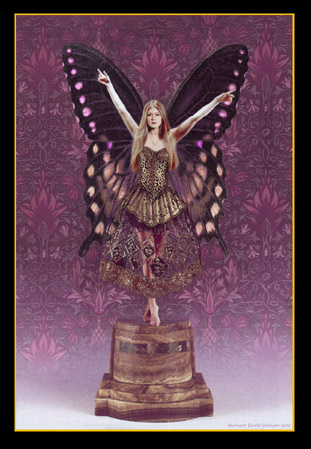
Thumbelina 2007-
Drawing, Painting, Photography, and Digital Composition
|
"All art is ultimately some form of
imitation, even if you are an expressionist painter imitating an
abstract vision in your own mind. These new visual art creations of
mine take their inspiration in part from the realistic paintings of the
old masters just as The Lord of the Rings comes from The Ring of the
Nibelung and European folklore and West Side Story came from Romeo and
Juliet, which was in turn inspired by Antony and Cleopatra. Much as
Rubens copied Titian, I copy Waterhouse and so on. Over the last 300
years, ideas about female beauty have drastically changed and this has
caused many of the most wonderful paintings of the old masters to seem
'ugly' to youthful modern audiences. For example, in the days of Peter
Paul Rubens, being forty to sixty pounds over-weight was considered not
only attractive, but was a status symbol. Beauty is in the eye of the
beholder and tastes have clearly changed. |
I feel many classic themes need to be
redone to preserve interest and appeal for future generations. This has
happened many times before as artists like Aesop, The Brothers Grimm
and Walt Disney have appropriated, modified, and re-defined elements of
our culture to preserve it for future generations. The legality of such
use today depends on whether or not the source is protected by
copyright law.
You can draw or paint Shakespeare's
fairies for example and publish them without permission but not more
modern intellectual properties like characters from Star Wars or Mickey
Mouse who holds the oldest copyright dating from 1928.
Our shared cultural
heritage, great works of art, literature, music and drama, cinema, folk
tales and fairy tales are all drawn upon again and again by the
creators of new works. These works in the public domain are both a
catalyst and a wellspring for creativity and innovation. Even though
all my Realistic Paintings are legally new works and protected under
copyright law their inspiration sometimes comes in part from works in
the public domain.
The public domain is a space
where intellectual property protection ( copyright ) does not apply.
When copyrights and patents expire, innovations and creative works fall
into the public domain. They may then be used by anyone without
permission and without the payment of a licensing fee. My sources have
been transformed so much in the creation of these new works of art that
they would not violate an existing copyright even if they were so
protected. Publicly owned national parks are also considered by many to
be public domain lands. Because of the recent extensions of the terms
of both copyrights and patents, and the privatization of lands and
other resources owned by the Federal Government, little is now entering
the public domain. Look for new litigation and another time extension
when Disney Corporation's Mickey Mouse copyright is due to expire in
2023. Where would Walt Disney be without the Brothers Grimm, Hans
Christian Anderson, or Victor Hugo? Where would Aaron Copeland have
been without American folk music? Thomas Nast's Santa Claus without
traditional images of Father Christmas? Picasso without African art?
These are artists who made names for themselves and even fortunes
through Public Domain appropriation, one and all.
Some people are actually outraged
that there are some intellectual properties that corporations do not
own. They feel appropriation is only appropriate if a corporation does
it. Corporations created by public domain appropriation, now are the
most powerful force on Earth trying to put a stop to new things
entering the public domain forever through lawsuits. The public domain
is a space where intellectual property protection ( copyright ) does
not apply. It was set up by our founding fathers, who felt creativity
needed to be rewarded on a personal level for a time, and when
copyrights and patents expired, innovations and creative works would
fall into the public domain. They may then be used by anyone without
permission and without the payment of a licensing fee. Publicly owned
national parks are also considered by many to be public domain lands.
Because of the recent extensions of the terms of both copyrights and
patents, and the privatization of lands and other resources owned by
the Federal Government, little is now entering the public domain. Look
for new litigation and another copyright law time extension when Mickey
Mouse's copyright expires in 2023. This is least likely to hurt the
motion picture companies who produce new works "in house" granting
themselves permission, but the music industry which does not is being
hit very hard already. If a new song release resembles an old one, now
there is litigation.
Since
the public domain is a treasure trove of information and resources to
be used by future generations, many advocates are concerned that its
stagnation will make it more and more difficult for future generations
to find creative inspiration. Art Tradition and etiquette suggest the
most influential should be mentioned at exhibits; these original new
pieces Shown in my exhibits take their inspiration in part from the
paintings of Waterhouse, Alma-Tadema, Moreau, Bouguereau, Leighton,
Ingres, Moore, Parrish, Rackham and others. They showcase some
of my favorite models. As a student of fine art, copying is a
great way to learn and create fine art, but as a professional
illustrator things are very different. Works done by artists out of
personal motivation belong to the artist who created them, and they can
sell licenses for divers forms of publication. The law is clear and
simple regarding illustration done for gainful employment. They are
called "work-for-hire" under the law, and the rights to such works
invisioned by the customer and specifically commissioned and paid for
belong exclusively to the customer and the artist must specifically ask
permission to ever legally use their own work themselves.
My art is
divided into two distinct groups; personal work partially copying the
old masters and professional illustration applying these lessons to
create totally original works. I start more often with a specific
written request. This is the exact OPPOSITE approach to creating a
picture from copying something that's there. Research comes first. In
the case of my illustration of the Spartan Warriors, there were no
accurate sources in the public domain to copy correct Greek armour and
weapons in combat poses from. Mostly I found effeminate men, wearing
nothing but a robe over the shoulder and the wrong helmets. Finding
history books at the library with the accurate helmets, shield designs,
weapons, and armour was essential to get an accurate depiction of a
Greek Hoplite. All the library had were stiff museum poses of
anything, but I hit the research jackpot with some very simplistic flat
line drawings of great authentic Greek shield designs. All the elements
must be found, gathered and assembled to create the dramatic action
scene the client wanted. Next comes the layout. This is where the
mathematics and geometric design come into the creative process. My
wife, Virginia took a picture of me nearly twenty years ago on a
carpentry project with the heroic Jack Kirby like pose I was looking
for mixed with the texture and feel of a Frank Frazetta or Norman
Rockwell painting. Naturally, in these cases I go to great lengths to
make sure that my work looks nothing whatsoever like it's various
inspirations and sources except in flavor and spirit. Of course, the
characteristic old master's painting feel to the background most of my
illustrations have was requested, and the picture was to have the
flavor of a Howard Pyle painting.
With regards to use of mechanical aids to create art: Did you know the
old masters traced? To create his immortal "Mona Lisa" Leonardo Da
Vinci used "Camera Obscura" which is two mirrors set at 45 degree
angles around the corner with parchment over it to trace onto.
Michaelangelo used a similar technique for the Sistine Chapel. Think
that makes it too quick and easy? You'll find once you've finally got
that outline done right you're a long, long, way from being finished in
any medium... if these men who set the standard for realistic
excellence used them, why shouldn't those who come after them be
permitted? Simple, because this is one of the most carefully guarded
"secrets of the old masters" and most people don't know very much about
art history... When asked why I usually work from photos I like
to re-tell Norman Rockwell's story about having to paint a chicken: He
set it up on a stump in a barn and goes to painting. The chicken moves
it's head. He moves it back. The chicken jumps down. He puts it back.
He goes to paint. now the chicken decides to make a break for it... he
chases it down clucking and screaming and puts it back. Now it knows
he's going to have it for dinner and it goes completely berserk. The
next day, he came in and set the chicken back, snapped it's picture,
and the photo held nice and still." When asked why I usually work from
photos I like to re-tell Norman Rockwell's story about having to paint
a chicken: He set it up on a stump in a barn and goes to painting. The
chicken moves it's head. He moves it back. The chicken jumps down. He
puts it back. He goes to paint. now the chicken decides to make a break
for it... he chases it down clucking and screaming and puts it back.
Now it knows he's going to have it for dinner and it goes completely
berserk. The next day, he came in, put the chicken back up and snapped
it's picture, and the picture held completely still...
I have built
up an enormous library of original 35 mm source photos for use in my
realistic art. For decades I have been seeking out the most
beautiful models and sometimes their boyfriends and bringing them in
for sessions into my photography studio. Using a strategy employed by
J. W. Waterhouse, my wistful and graceful female models cannot be
underestimated in their contribution to the stunning beauty and the
potential for lasting appeal of my work. I am always make sure to both
pay them for their time and also the rights and with the exception of
my closest friends and family who are always making cameo appearances I
get a written contract. The law with regards to rights to photography
is simple- if you own the negative you own the rights. This is the main
reason I use my own photographs. With regards to using copyrighted
material as a reference- When you have to paint a wombat you
can't fake it- you need a picture! The law understands this and
automatically grants provision - within reasonable limits; when using
copyrighted sources for reference the source image must be sufficiently
transformed in overall appearance in the translation so as not to be
what the law calls "confusingly similar"... if it's newer than 1928 you
can bet it's probably copyrighted- if it's newer than 1999 under the
millennial copyright act the law says it is automatically copyrighted
without even filing. However, this new law is very tricky in it's
wording because you must have already have filed with the copyright
office in advance if you ever need to take legal action.
Because of this "instant copyright without filing" is very favorable to
corporations hoping to cheat artists out of their life's work. When
properly interpreted and acted upon, it is great for
contemporary artists and their estates, who will hold rights for
seventy years after the artists death."
~
Howard David Johnson M M I V
The
Constitutional Provision Respecting Copyright
The Congress
shall have power... To promote the progress of Science and the useful
arts, by securing for limited times to Authors and
Inventors the exclusive right to their respective Writings and
Discoveries.
United
States Constitution Article I Section 8
*****
|
Thank You
for visiting the Digital Art Galleries Page of Howard David
Johnson








































 The Dragon scene was mechanically copied, distorted and imported
from one of my previously completed pieces of Traditional Original
Fantasy Art
The Dragon scene was mechanically copied, distorted and imported
from one of my previously completed pieces of Traditional Original
Fantasy Art
